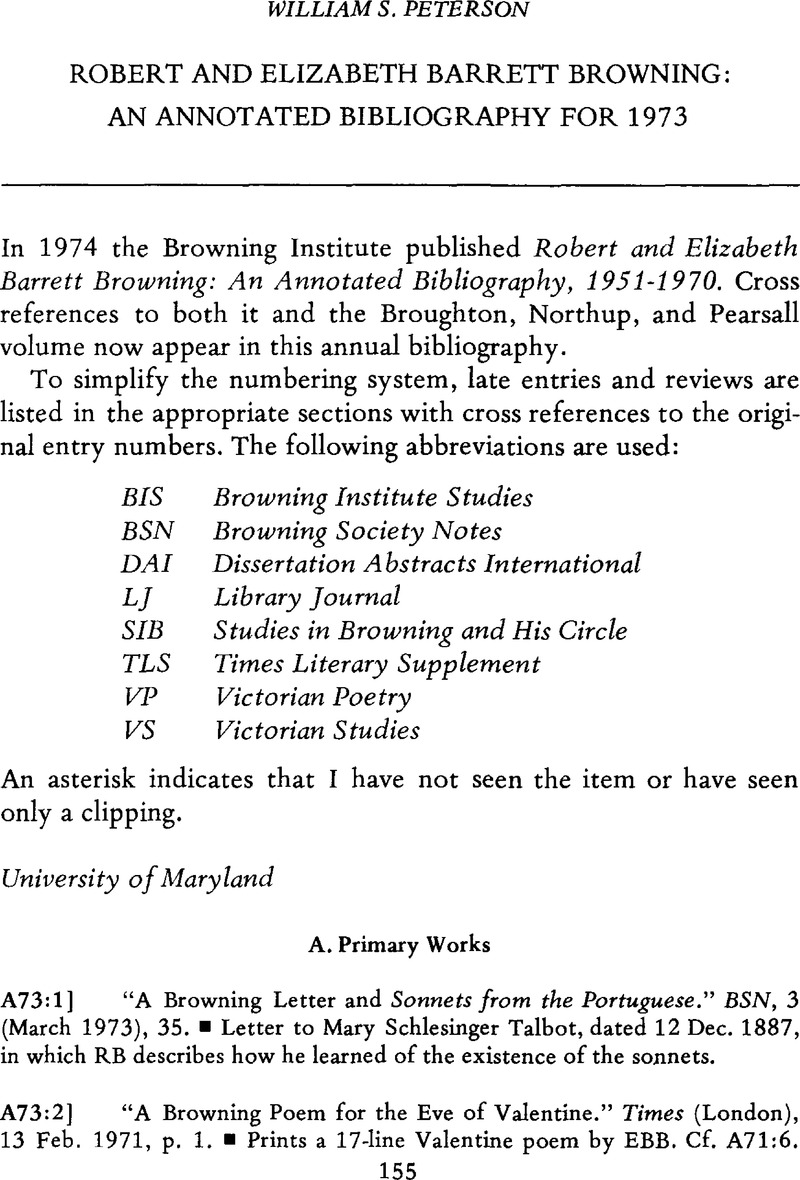A73:10]Gladish, Robert W.Elizabeth Barrett and the “Centurion”: The Background to an Addition to the Elizabeth Barrett Browning Canon. (Baylor Browning Interests, No. 23.)
Waco, Tex.:
Armstrong Browning Library,
1973. pp.
xviii +
56. ▪ Reprint of EBB's anonymous review of Cornelius Mathews' poetry (and a MS version of the review), followed by a general discussion of the circumstances under which it was written. (“Centurion” was Mathews' nickname.) ▪ Rev. by Gardner B. Taplin,
VP, 12 (Autumn, 1974), 241–42.
Google Scholar 